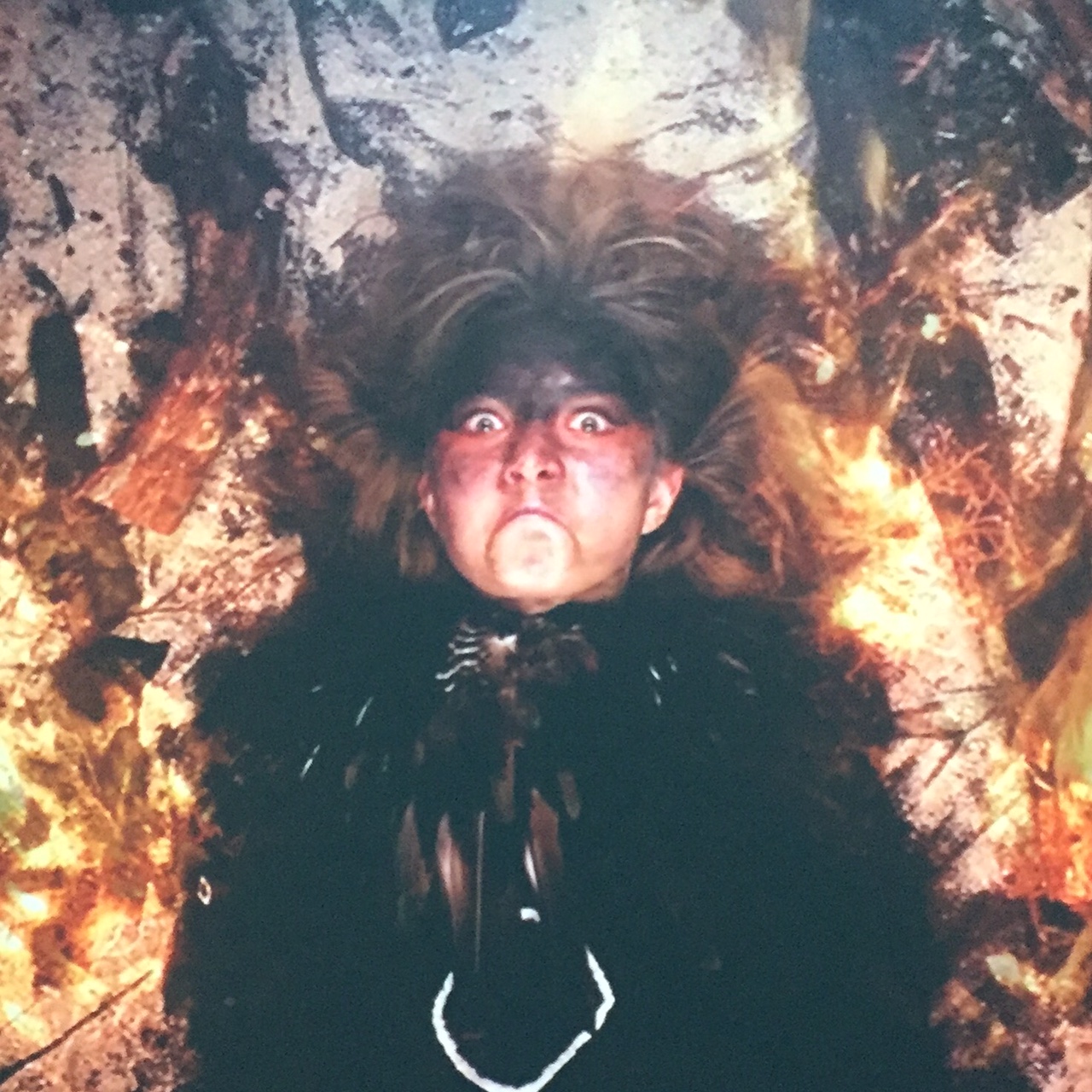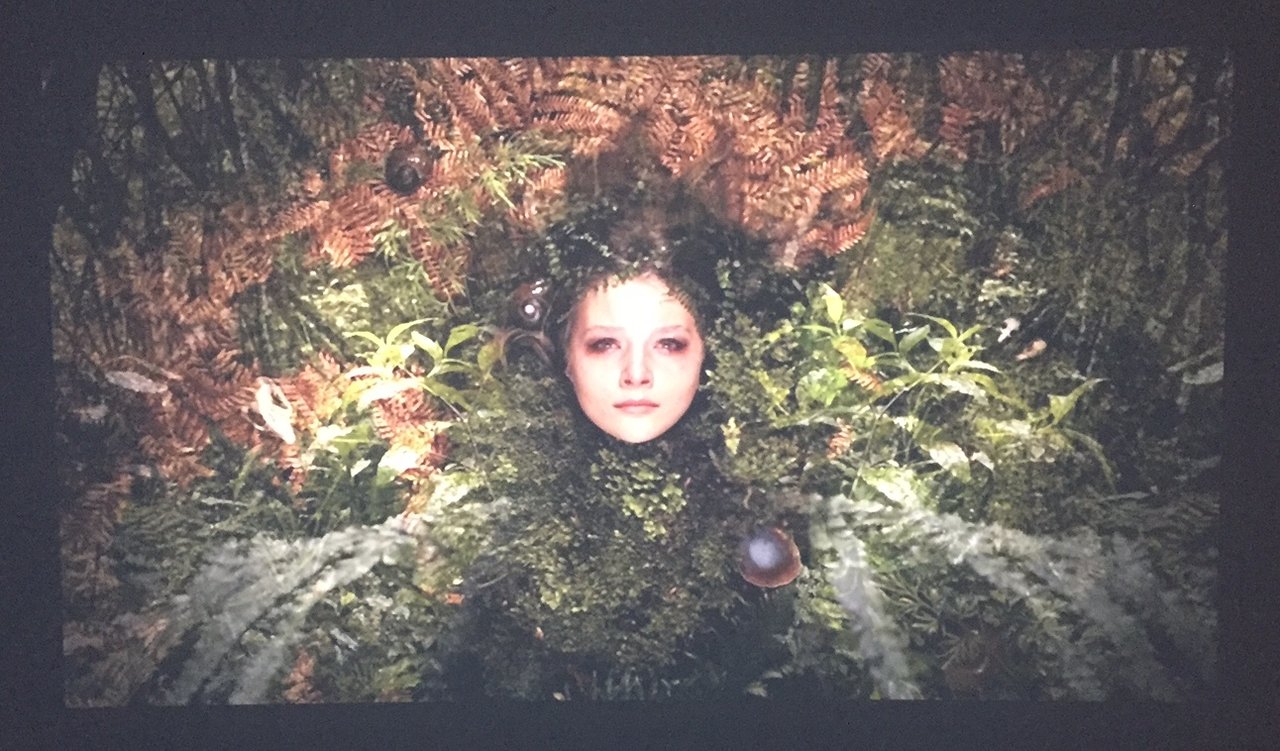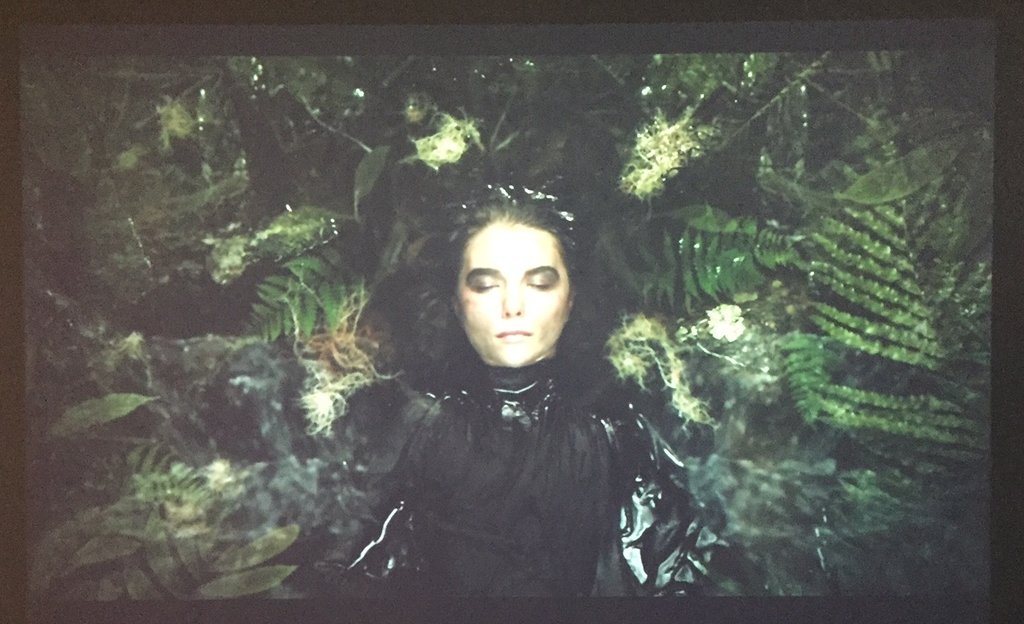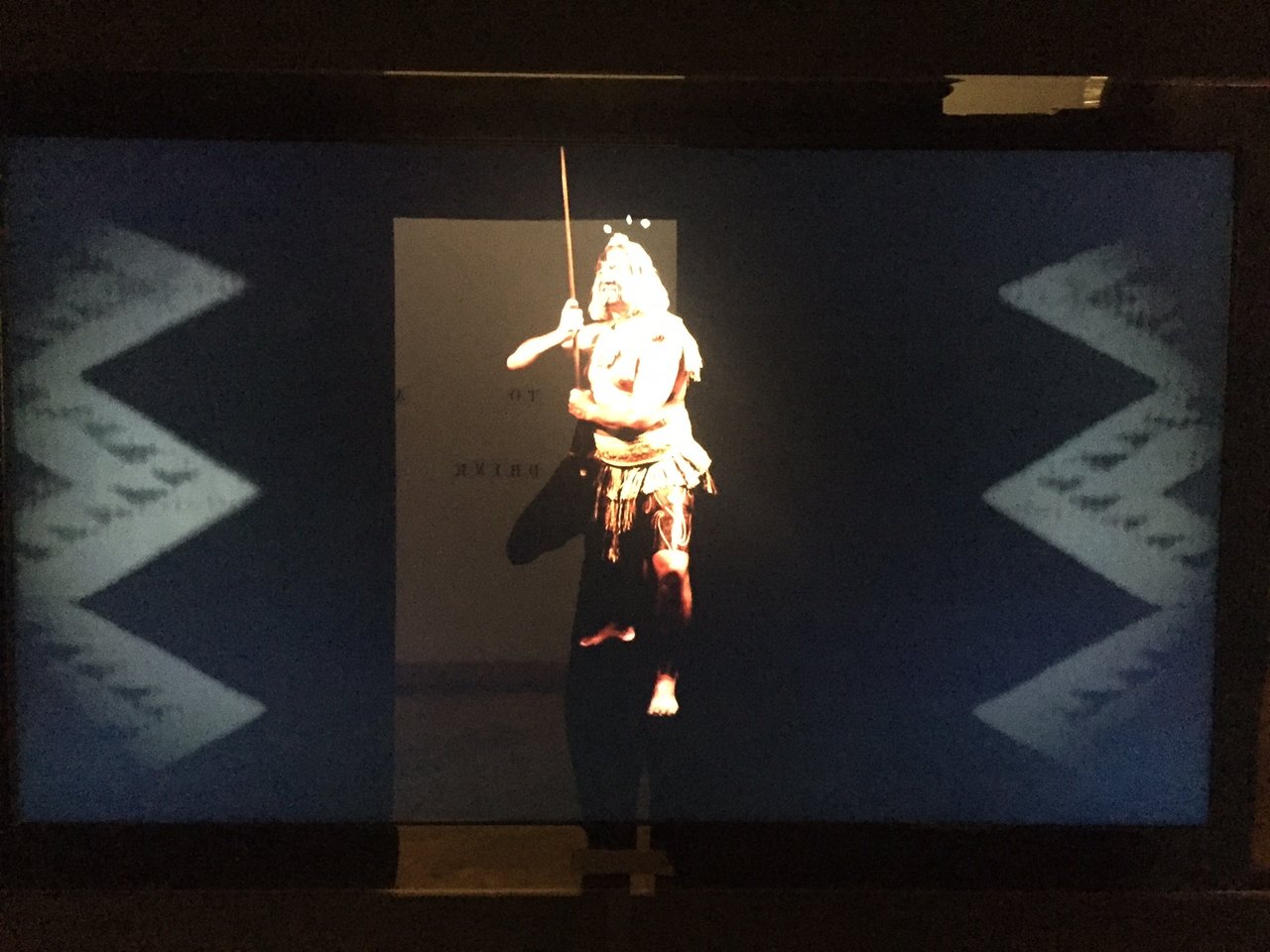Welcome to A Space’s Wananga – meaning traditional Maori learning space – where three video works by Rona Ngahuia Osborne and Dan Mace bring together elemental personifications and traditional cosmology in a technological medium. Framed by the doorway, the work “Te Taki” (2016) is both confrontational and welcoming. The video begins with a powhiri ritual. A man in traditional garb, spear in hand, with tribal tattoos and wide eyes challenges viewers to face their intentions in the space. Another figure appears on the screen to call the visitor into the exhibition.
“Te Taki” is a safe gateway into the two video installations “Elemental” (2016) and “Wheturangi” (2015). It was commissioned to serve the same purpose for the permanent collection of the Waitangi Museum in New Zealand.
 Installation view of Elemental, Fire (left), Earth (middle) and Water (right)
Installation view of Elemental, Fire (left), Earth (middle) and Water (right)
“Elemental” includes four large independently looped video projections of personified fire, earth, air and water, each on one wall. The ‘motion portraits’ are female faces, blinking slowly with their hair splayed across the top of the composition, and surrounded by costumes built of natural materials. “Fire” expresses rage, “Earth” a rumbling sadness, “Air” bears mischief on the corners of her mouth, and “Water” a still stoicism. The first element visible from the gallery entrance is strategically placed “Earth”, the grounding element and signifier of home. Osborne and Mace each come from a transcontinental ancestry respectively including: Clan Fyfe, Clan Caduggan and Kai Tahu; and Ngati Maru, Ngati Tamatera, Clan O’Boyle and Ngai Te Rangi. Being able to call the earth you stand on a home would certainly alleviate homesickness for a nomad.
 Elemental: Fire, detail, 2016, video still
Elemental: Fire, detail, 2016, video still
 Elemental: Earth, 2016, video still
Elemental: Earth, 2016, video still
 Elemental: Air, 2016, video still
Elemental: Air, 2016, video still
 Elemental: Water, 2016, video still
Elemental: Water, 2016, video still
Capturing a more cosmological, spiritual home is the video installation “Whetūrangi.” Behind a curtain in a dark room, seven screens independently on loop are placed in the formation of the Matariki (Pleiades) constellation that appears on the horizon in June marking the Maori New Year. A mystical woman appears on each of the seven screens embodying one of the constellation’s qualities, narrative oral traditions or Osborne’s own imagination. As the looped videos are not synchronized, the natural sounds and harmonic humming as well as the interplay between figures are technically proficient. The notes are constantly in harmony, the rhythms a soothing pulse, the space vibrates with energy and the darkness is womblike. The portraits and constellation are unmoving but the experience is ever changing.
 Installation view of Whetūrangi, 2015
Installation view of Whetūrangi, 2015
Narratives and rituals communicated through oral traditions are often lost when culture moves into a written mode of storytelling, but technology allows for oral, written and visual modes of communication to re-mediate otherwise inaccessible cultural encounters. Sadly the video technology that makes these narratives and histories more accessible also lends itself as a medium for cultural appropriation. Rather than focus on the loss of their cultures, Osborne and Mace celebrate what survives, and a celebratory intention is how I invite you to visit the space.
Text and photo: Alice Pelot
*Exhibition information: September 27 – October 29, 2016, A Space Gallery, 401 Richmond Street West, #110, Toronto. Gallery hours: Tue – Fri, 11 am – 5 pm, Sat, 12 – 5 pm.

